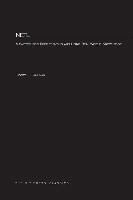Read more
"Consider for a moment the layers of structure and meaning that are attached to concepts like lawsuit, birthday party, fire, mother, walrus, cabbage, or king...If I tell you that a house burned down, and that the fire started at a child's birthday party, you will think immediately of the candles on the cake and perhaps of the many paper decorations. You will not, In all probability, find yourself thinking about playing pin-the- tall-on-the-donkey or about the color of the cake's icing or about the fact that birthdays come once a year. These concepts are there when you need them, but they do not seem to slow down the search for a link between fires and birthday parties."The human mind can do many remarkable things. One of the most remarkable Is its ability to store an enormous quantity and variety of knowledge and to locate and retrieve whatever part of it is relevant in a particular context quickly and in most cases almost without effort. "If we are ever to create an artificial intelligence with human-like abilities," Fahlman writes, "we will have to endow it with a comparable knowledge-handling facility; current knowledge-base systems fall far short of this goal.
This report describes an approach to the problem of representing and using realworld knowledge in a computer."The system developed by Fahlman and presented in this book consists of two more-or-less independent parts. The first is the system's parallel network memory scheme: "Knowledge Is stored as a pattern of interconnections of very simple parallel processing elements: node units that can store a dozen or so distinct marker-bits, and link units that can propagate those markers from node to node, in parallel through the network. Using these marker-bit movements, the parallel network system can perform searches and many common deductions very quickly."The second (and more traditional) part of the knowledge-base system presented here is NETL, "a vocabulary of conventions and processing algorithms--in some sense, a language--for representing various kinds of knowledge as nodes and links in the network...NETL incorporates a number of representational techniques--new ideas and new combinations of old ideas-which allow it to represent certain real-world concepts more precisely and more efficiently than earlier systems...N
ETL has been designed to operate efficiently on the parallel network machine described above, and to exploit this machine's special abilities. Most of the ideas in NETL are applicable to knowledge-base systems on serial machines as well."
Summary
The system presented in this book consists of two more-or-less independent parts. The first is the system's parallel network memory scheme; the second part of the knowledge-base system presented here is NETL, "a vocabulary of conventions and processing algorithms-in some sense, a language-for representing various kinds of knowledge as nodes and links in the network...."

